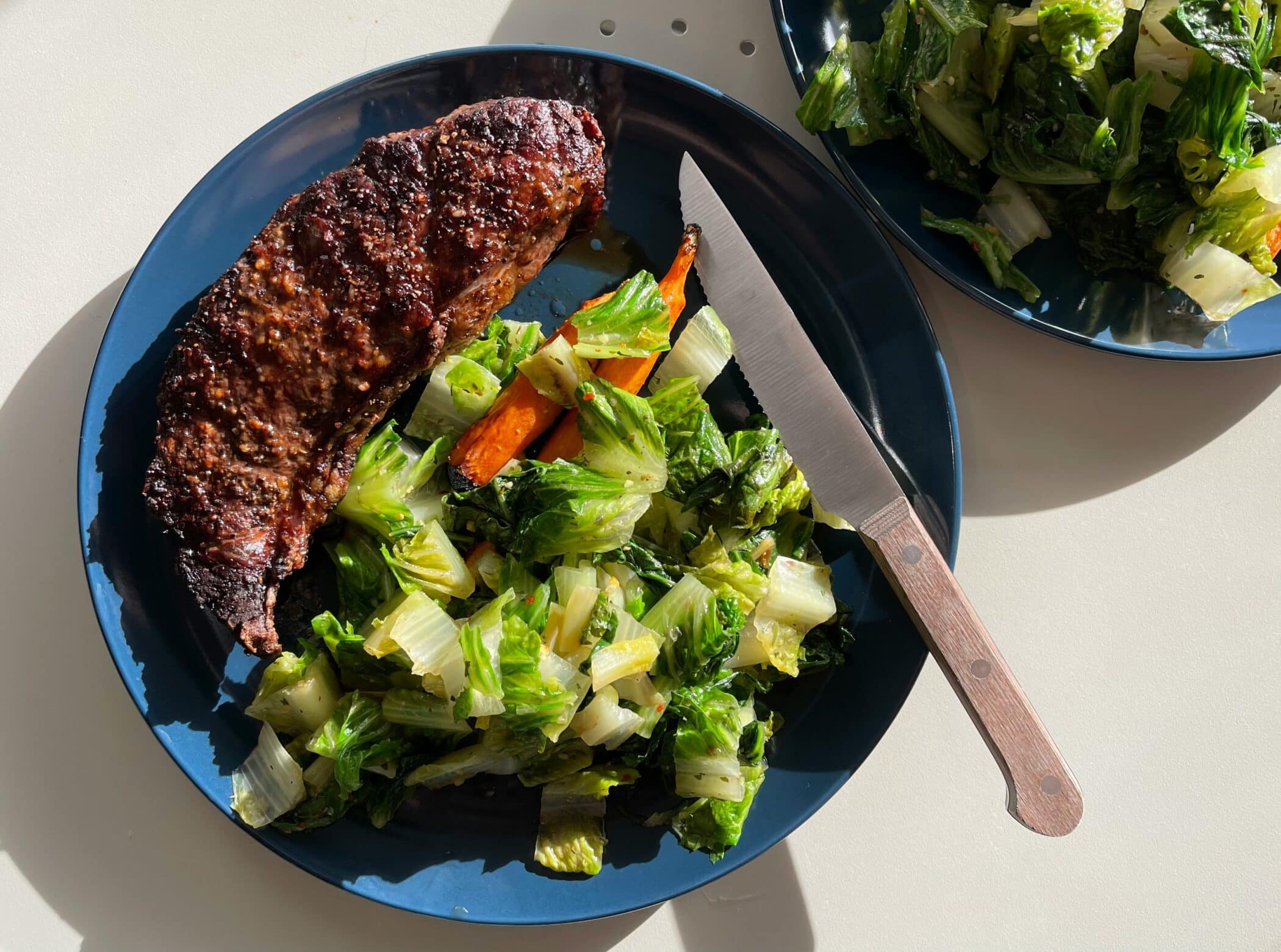
The debate between ketogenic and low-carb diets continues to spark interest among health enthusiasts and weight-loss seekers. Both approaches limit carbohydrates, but their methods and effects on your body differ significantly.
Table of Contents
Understanding the Core Differences
A clear grasp of each diet’s fundamentals will help you make an informed choice for your health journey.
The Ketogenic Diet
The ketogenic diet represents one of the strictest forms of carbohydrate restriction, pushing your body into a state called ketosis. This metabolic shift fundamentally changes how your body produces energy, leading to some unique effects and requirements:
- Carb intake: 20-50g per day (5% of calories)
- Fat intake: 70-80% of calories
- Protein intake: 20-25% of calories
- Primary goal: Achieve ketosis
- Body fuel source: Ketones from fat
Standard Low-Carb Diet
A more moderate approach to carbohydrate restriction, the standard low-carb diet offers greater flexibility while still providing many health benefits. This balanced approach makes it more adaptable to various lifestyles:
- Carb intake: 50-150g per day (10-30% of calories)
- Fat intake: 40-60% of calories
- Protein intake: 20-30% of calories
- Primary goal: Reduce insulin response
- Body fuel source: Mix of glucose and fat
The Science Behind Each Diet

Ketogenic Diet Mechanism
Your body enters ketosis when carbohydrates are severely restricted. During this metabolic state:
- Liver produces ketones
- Fat becomes primary energy source
- Insulin levels drop significantly
- Metabolic changes occur within 3-4 days
Low-Carb Diet Mechanism
This approach focuses on reducing, not eliminating, carbs:
- Blood sugar levels stabilize
- Insulin sensitivity improves
- Metabolism remains glucose-dependent
- Changes occur gradually
Health Benefits Comparison
Ketogenic Diet Benefits
- Rapid initial weight loss
- Potential neurological benefits
- Sharper mental clarity
- Reduced hunger
- Higher fat burning rate
Low-Carb Diet Benefits
- Sustainable weight loss
- More dietary flexibility
- Easier social adaptation
- Stable energy levels
- Better exercise performance
Potential Drawbacks
Keto Challenges
- Keto flu during adaptation
- Strict macro tracking required
- Limited food choices
- Possible nutrient deficiencies
- Social dining difficulties
Low-Carb Challenges
- Slower initial results
- Possible cravings
- Requires portion control
- Need for meal planning
- Moderate food restrictions
Which Diet Suits You Better?
Choose Keto If You:
- Need rapid initial results
- Can strictly track macros
- Have neurological concerns
- Don’t mind limited food choices
- Can handle strict regimens
Choose Low-Carb If You:
- Prefer gradual, sustainable change
- Want more food flexibility
- Are physically active
- Value social dining
- Need dietary adaptability
Which One Burns Fat Faster?
When it comes to rapid fat loss, research shows the ketogenic diet often has an edge in the short term. Here’s why:
Keto’s Fat-Burning Advantages
The ketogenic diet’s strict approach triggers several mechanisms that accelerate fat loss:
- Rapid water weight loss in first week (2-10 pounds)
- Higher ketone production increases fat burning
- Dramatic insulin reduction helps access fat stores
- Appetite suppression leads to natural calorie reduction
- Average fat loss: 2-4 pounds per week initially
Low-Carb’s Fat Loss Pattern
The low-carb approach produces more gradual but steady fat loss:
- Initial water weight loss (1-5 pounds)
- Steady fat burning through calorie deficit
- Moderate insulin reduction
- Natural appetite control
- Average fat loss: 1-2 pounds per week
Best Diet Choice for Your Exercise Style
For Weight Training
The low-carb diet typically works better for resistance training:
- Provides necessary glycogen for muscle performance
- Better muscle recovery and growth
- Maintains strength during heavy lifts
- Supports protein synthesis
- Allows for workout-timed carb intake
Optimal approach for lifters:
- Higher carb intake on training days
- Strategic carb timing around workouts
- 30-50g carbs pre-workout
- 25-35g carbs post-workout
- Focus on complex carbs for sustained energy
For Cardio Training
The ketogenic diet can work well for steady-state cardio:
- Fat adaptation helps endurance
- Stable energy during moderate sessions
- Less need for mid-workout fueling
- Good for low-intensity cardio
- Works for shorter cardio sessions
Cardio considerations on keto:
- May impact high-intensity performance
- Better for steady-state activities
- Requires proper electrolyte balance
- Good for fat-burning zones
- Best for shorter duration sessions
Hybrid Approach
For those mixing cardio and weights:
- Follow low-carb with strategic carb timing
- Higher carbs on lifting days
- Lower carbs on cardio days
- Adjust based on workout intensity
- Monitor performance and recovery
Which One Burns Fat Faster?
If your primary goal is rapid fat loss and you can handle strict dietary restrictions, the ketogenic diet typically produces faster initial results. However, both approaches are effective for fat loss when followed consistently. After 6-12 months, studies show similar total fat loss between the two diets.
Long-Term Success Rates
Ketogenic Diet
Research and real-world experience show that while the ketogenic diet can produce dramatic initial results, maintaining it long-term presents unique challenges:
- Higher dropout rate
- Excellent short-term results
- Challenging long-term adherence
- Strong initial motivation required
Low-Carb Diet
Studies indicate that low-carb diets often lead to better long-term outcomes, largely due to their more flexible nature:
- Lower dropout rate
- Steady, consistent results
- Better long-term adherence
- More sustainable approach
Making Your Decision
The choice between keto and low-carb isn’t just about weight loss—it’s about finding an eating pattern that fits seamlessly into your life. Consider these critical factors in your decision:
- Your lifestyle demands
- Health goals
- Exercise routine
- Social environment
- Food preferences
What to Expect in Your First Weeks
The Initial Transition Period
Making the switch to either diet requires patience as your body adapts to lower carb intake. The first few weeks can be challenging but understanding what to expect helps you stay committed:
Days 1-3: Initial Changes
- Rapid water weight loss (2-10 pounds)
- Increased urination
- Possible headaches
- Temporary fatigue
- Sugar cravings
Days 4-7: Peak Adaptation
The “carb flu” or “keto flu” typically hits hardest now:
- Brain fog
- Irritability
- Dizziness
- Muscle cramps
- Sleep changes
- Nausea (more common with keto)
Week 2: Improvement Phase
Most people start feeling better:
- Energy levels stabilize
- Mental clarity improves
- Decreased hunger
- Fewer cravings
- Better sleep quality
Managing Transition Symptoms
To minimize discomfort:
- Stay well hydrated (2-3 liters daily)
- Increase salt intake
- Consider magnesium supplements
- Get adequate sleep
- Maintain consistent meal timing
When to Be Concerned
Seek medical advice if you experience:
- Severe dehydration
- Persistent vomiting
- Extreme fatigue
- Heart palpitations
- Difficulty breathing
Making Your Final Choice
When choosing between keto and low-carb diets, consider your lifestyle, exercise routine, and long-term goals. The ketogenic diet offers rapid results through strict adherence, while low-carb provides a more flexible path to sustainable health. Both approaches can effectively improve health and support weight loss when followed consistently.
Implementing Your Diet Choice
Whichever path you choose, success comes down to proper planning and execution. Consider factors like meal prep time, grocery shopping, and nutritional balance. Both diets require attention to food quality and macronutrient ratios.
Quality Matters
Whether you choose keto or low-carb, the quality of your food sources significantly impacts your results. Focus on:
- Non-GMO ingredients
- Organic produce when possible
- Antibiotic-free proteins
- No artificial preservatives
- Fresh, locally sourced ingredients
- Proper portion control
Ready to start your health journey without the hassle of meal planning and prep? Jet Fuel Meals offers both a Ketogenic Inspired Plan and a Weight Loss Meal Plan (low-carb), featuring chef-prepared meals made with premium ingredients. Each plan includes fresh, never-frozen meals, locally sourced ingredients, antibiotic-free proteins, and convenient delivery three times per week. Skip the grocery shopping and meal prep – visit Jet Fuel Meals today to choose the plan that matches your health goals and get started on your transformation journey.

